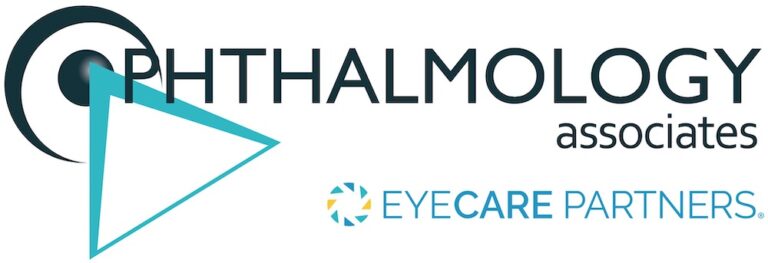
At Ophthalmology Associates, we understand how important clear vision is for your quality of life. Our dedicated team of experienced eye doctors is here to guide you through every step of your cataract treatment journey. Regain the clarity you deserve with state-of-the-art cataract surgery for patients in greater St. Louis, St. Charles, and Sullivan, Missouri.


Imagine life without the haze of cataracts. Our advanced cataract surgery options, including advanced intraocular lens (IOL) choices, are designed to restore your vision and improve your day-to-day life. Whether you’ve been dealing with fuzzy vision, sensitivity to light, or difficulty with daily tasks, our experienced cataract surgeons are ready to help.
Our compassionate team is excited to be a part of your journey to better vision. Learn more about Doctors Berdy and Malhotra, then schedule a consultation and come meet them in person.
View All DoctorsWhile mild cataracts may be correctable with glasses or contacts, cataract surgery is the only way to effectively treat moderate to advanced cataracts. During cataract surgery, the cloudy lens is removed and replaced with an artificial intraocular lens (IOL). Our team utilizes small incisions and advanced techniques to gently remove the cloudy lens and replace it with a clear artificial lens, improving your vision instantly. Cataract surgery is an outpatient procedure and one of the most commonly performed surgeries. It’s considered minimally invasive and typically takes about 30 minutes per eye.
After your surgery, you will have certain restrictions you need to follow. You will not be able to drive home from surgery on your own, so plan to have a friend or family member drive you home. Depending on your individual needs, your surgeon may provide dark glasses to reduce any glare you may experience after surgery and give your eyes a chance to rest and heal. Your doctor may also prescribe you eye drops or other medicine to help you recover from cataract surgery.
We’ll provide you with detailed postoperative instructions and schedule follow-up appointments to ensure a smooth recovery process.

At Ophthalmology Associates, we are pleased to offer a variety of lens options to our patients. Your eye surgeon will help you determine which option is best for your unique eyes.
Ophthalmology Associates offers advanced IOLs for patients wishing to further improve their vision. The best lens for you depends on many factors, including your lifestyle and specific vision needs. In addition to removing the symptoms of cataracts, these advanced lenses can also correct nearsightedness, farsightedness, astigmatism, and even age-related loss of near vision (presbyopia). ATIOLs can help reduce or even eliminate the need for eyeglasses and contacts. Additional costs are involved, and many patients choose to use an interest-free financing option or pay with cash or credit card. Contact us to discuss your options.
The Light Adjustable Lens is the only adjustable intraocular lens (IOL) available that allows optimization of your vision after lens implantation and healing. If you and your doctor select the Light Adjustable Lens, the first step is to have your cataract safely removed and the adjustable IOL implanted. The cataract removal and IOL implantation procedure is the same as if you selected a non-adjustable IOL.
What is unique about the Light Adjustable Lens is that once your eye has healed, you return to your eye doctor to have your vision tested. During this visit you will be able to preview and compare possible vision outcomes based on your unique preferences and lifestyle requirements before selecting a prescription for your adjustable lens. Your doctor will then apply a proprietary light treatment that precisely reshapes your implanted lens based on the visual correction that is needed to target your custom prescription. You may need up to 3 total light treatments to reach your vision goals. Additional costs are involved, and many patients choose to use an interest-free financing option or pay with cash or credit card. Contact us to learn more and discuss your options.
If you don’t mind wearing glasses, you may opt for a basic monofocal (single-focus) IOL. This traditional lens is used to replace the cloudy lens of the eye, reversing the effects of cataracts. This technology has been available for many years and improved millions of patients’ vision. The lens corrects your vision for one distance only. This means that you will continue to be dependent on glasses for some tasks, such as reading. Basic monofocal IOLs are covered by most medical insurance plans.
Ophthalmology Associates uses the most advanced lenses and will be happy to discuss the best options for your unique eyes. To find out which intraocular lens option is best for you, schedule a consultation with an Ophthalmology Associates cataract surgeon today.

Cataracts are a common age-related condition where the natural lens of the eye becomes cloudy, causing vision to deteriorate. The National Eye Institute estimates that about 50% of Americans have cataracts by the age of 75. While cataracts are not painful, they can severely interfere with quality of life and can even cause blindness if left untreated.
Cataracts are a normal part of aging that happens when proteins in the eye start to break down. Some people may be predisposed to cataracts due to genetics or certain health conditions.
While there are steps you can take to protect your overall eye health, such as wearing UV-protective sunglasses and not smoking, cataracts cannot be prevented. The good news is that modern cataract surgery is a safe and effective solution.
Cataract surgery is recommended when cataracts significantly affect daily activities and quality of life. When vision loss starts to interfere with tasks like driving, reading, or recognizing faces, surgery may be considered.
According to the American Refractive Surgery Council, cataract surgery is widely known as a safe and effective procedure, with a complication rate under 2%.
There are a number of factors that influence the cost of cataract surgery. These include whether you need cataracts removed from one or both eyes, the type of surgical equipment used, and the miscellaneous needs of your unique eyes. For more information about the cost of your procedure and payment options, contact your Ophthalmology Associates care team.
The choice of intraocular lens (IOL) used during surgery can influence your need for glasses after the procedure. Standard monofocal IOLs correct vision at a single distance. Some premium IOLs are designed to correct refractive errors like nearsightedness, farsightedness, astigmatism, and presbyopia, reducing the need for glasses. Depending on the IOL you choose, you might still need reading glasses or glasses for other specific tasks.
A posterior capsulotomy is a surgical procedure that is sometimes necessary after cataract surgery, also commonly referred to as a “YAG” (for the type of laser used). Some patients experience cloudy or blurry vision after cataract surgery, with symptoms becoming noticeable anywhere from a few months to many years after surgery. In those cases, a simple one-time YAG procedure can be performed to clear their vision. Learn More About Cataracts and YAG.
At Ophthalmology Associates, we offer a wide range of premium IOL options, including multifocal lenses that can correct vision at multiple distances, as well as lenses that treat astigmatism. Your eye doctor will explain which options may be right for you. Learn more about IOL options.